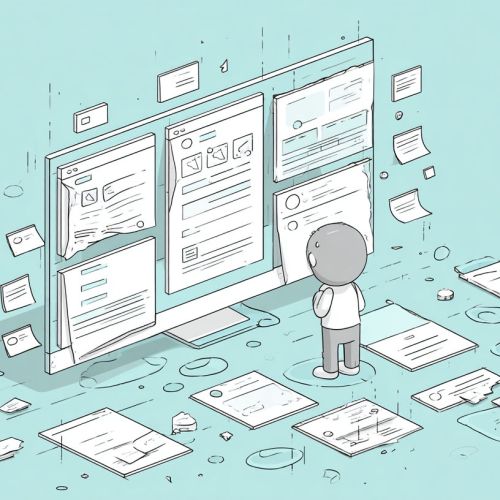Imagine waking up to an unexpected email from YouTube: your channel’s monetization has been suspended because your videos are identified as AI-generated content. This very scenario is now becoming a reality for many creators, as YouTube implements a sweeping change to its monetization rules.
The YouTube AI monetization policy marks a significant shift in how the platform treats content generated or heavily assisted by artificial intelligence. Effective immediately, YouTube will no longer allow creators to earn ad revenue from videos that rely primarily on AI-generated elements. This change comes at a crucial moment when generative AI tools like ChatGPT, Midjourney, and Synthesia have become integral parts of creative workflows.
This article will explore the depths of this policy change. You will gain insights on what qualifies as monetizable under the new guidelines, how creators and brands are impacted, and how the evolving digital content landscape is reshaping strategies for growth and engagement. As marketing leaders and tech-savvy decision-makers, understanding these nuances will empower you to adapt and innovate in this AI-driven content ecosystem.
Understanding YouTube’s New Monetization Policy
What Does the YouTube AI Monetization Policy Entail?
YouTube’s updated YouTube AI monetization policy explicitly prohibits ad revenue from videos that are wholly or predominantly AI-generated without meaningful human involvement. This means videos where AI creates the entire script, visuals, and audio with minimal human editing or input will be disqualified from monetization.
Effective as of mid-2024, the platform has refined its criteria to tackle the rising volume of AI-generated uploads. According to YouTube’s official statement, the policy covers a wide range of generative AI content, including deepfake videos, synthetic voices, and AI-created imagery, notably when the content lacks educational, documentary, scientific, or artistic context.
Defining AI-Generated Content Under the New Policy
Under the new guidelines, AI-generated content refers to videos created primarily through AI tools, with insufficient human input to transform the content. Examples include:
- Videos generated using text-to-video AI models that produce complete narratives or scenes.
- Voiceover narrations are synthesized entirely by AI without human voice actors.
- Visual assets or animations are fully rendered through AI without manual enhancement.
YouTube expects creators to demonstrate evident human creativity and editorial judgment. For instance, a video combining AI-assisted graphics with personally crafted storytelling and genuine commentary may still qualify for monetization.
Why Is YouTube Taking This Stance?
Multiple factors drove YouTube to revise its AI monetization rules:
- Brand Safety: Advertisers demand high-quality, authentic content reflecting their brand values. AI-only videos, especially content farms, introduce risk.
- Ad Quality: Low-effort, AI-generated videos often yield lower engagement and higher bounce rates, reducing advertiser ROI.
- Audience Trust: Viewers value genuine creators with original voices. The prevalence of AI-generated content threatens trust in YouTube’s ecosystem.
- Regulatory Pressure: Governments and content watchdogs increasingly scrutinize platforms for misinformation and copyright infringements linked to AI.
Immediate Ramifications for Creators Using Generative AI Tools
Creators who have built channels relying heavily on AI tools must reassess their strategies. Their monetization earnings will face reduction or suspension, forcing a pivot toward more human-centric content.
Popular generative tools impacted include:
- ChatGPT and other AI writers for scripting.
- Midjourney and DALL-E for AI-generated imagery used as video assets.
- Synthesia and similar platforms for AI avatars and synthetic speech.
Discussions with early adopters reveal frustration but also a growing awareness of balancing efficiencies gained from AI with authentic human creativity.
YouTube’s Transparency and Current AI Impact Statistics
According to recent studies published by digital research firm Tubefilter, AI-augmented content now constitutes approximately 15-20% of total uploads daily. YouTube’s transparency reports indicate a marked increase in automated, low-quality AI uploads flagged for spam or policy violations. This trend highlights the need for more rigorous content curation and monetization standards.
The Impact on Content Creators and Influencers
Revenue Loss and Business Model Disruption
For creators who have incorporated AI to scale production rapidly, the YouTube AI monetization policy change introduces financial uncertainty. Automated “faceless” channels, which generate hundreds of videos monthly using AI scripts and voiceovers, face revenue freezes or demonetization.
Data from influencer marketing platform Social Blade shows that channels reliant on AI-generated videos could see earning drops upwards of 40% post-policy. This disrupts not only income but also the valuation of creator businesses dependent on ad revenue.
Challenges for Faceless Channels and Content Farms
AI-optimized content farms that produce clickbait-style videos with minimal original input are disproportionately affected. These channels often reach massive view counts via SEO tactics but now lack access to monetization, challenging their sustainability.
Opportunities for Human-Driven Creators
Conversely, creators committed to authentic storytelling and original content stand to benefit. YouTube’s guidelines reinforce the premium placed on human creativity, signaling that quality, personal brand narratives remain gold standards.
Navigating the Shift: Hybrid Workflows and Compliance
Forward-thinking creators are adopting hybrid workflows where AI tools assist research or idea generation but humans maintain editorial control and inject personality. Transparency through content disclosures about AI usage can also build audience trust.
Creators sharing experiences online highlight tactics such as focusing on original commentary, filming personal insights, and using AI only as a supplementary resource rather than the main content driver.
Case Study: Channel Pivoting After Policy Announcement
Consider the example of “TechTalk Weekly,” a tech-focused channel that initially used AI scripts and voiceovers. After monetization restrictions, they shifted to hosting expert interviews, live demos, and AI-assisted but human-edited explanatory videos. This pivot preserved audience engagement and restored monetization within three months.
What This Means for Brands and Advertisers
Increased Brand Concerns Over Ad Placement
Advertisers fear their products appearing alongside machine-generated, low-quality, or potentially misleading AI content. The impact of AI policy on content creators directly influences brand safety strategies, prompting brands to reevaluate where they allocate digital ad budgets.
Influence on Influencer Marketing Campaigns
Sponsored content and influencer partnerships see a shift toward creators who can demonstrate authenticity and genuine human engagement. Brands hesitate to invest in faceless or highly automated channels that risk policy penalties.
Reallocation of Advertising Spend
With AI-generated videos excluded from monetization, brands may redirect budgets to verified creators producing original content and to emerging formats prioritizing authenticity, such as live streams and interactive video.
Effects on CPM Rates and Ad Quality
Initial data from media agencies reveal CPM (cost per mille) rates trending higher on verified creator channels post-policy due to improved viewer quality and engagement metrics. Advertisers anticipate this shift to enhance ad effectiveness and brand recall.
Expert Insight: Adapting Strategy in Response
Digital marketing strategist Laura Simmons emphasizes, “The YouTube AI monetization policy change forces brands to sharpen criteria for influencer selection. Authenticity, storytelling, and transparent creator practices are now non-negotiables for campaign success.”
AI Content, Copyright, and Platform Liability
The Copyright Challenges of AI-Generated Content
One of the driving forces behind the digital content policy changes is the complex copyright landscape surrounding AI-generated media. Tools like Stable Diffusion and GPT models often train on copyrighted works, raising legal risks for uploaded content.
YouTube contends with protecting copyrights while encouraging innovation—a balance complicated by AI’s capacity to replicate styles or generate derivative content without clear rights.
Misinformation and Deepfake Concerns
AI technology facilitates rapid creation of deepfakes and manipulated media, heightening misinformation potential. YouTube’s policy reflects the platform’s responsibility to minimize the spread of deceptive content through revenue incentives.
Regulatory Pressures on Platforms
Governments worldwide are increasingly holding platforms accountable for harmful AI content. For example, the EU’s Digital Services Act and U.S. discussions on AI accountability underscore mounting pressure on YouTube and similar platforms.
YouTube’s Platform Liability and Content Moderation
As a user-generated content hub, YouTube faces unique challenges balancing free expression with regulatory compliance and ethical standards. The AI monetization policy emerges as part of broader efforts to enforce quality controls and minimize liability.
Legal Reference: Getty Images vs. Stability AI
High-profile lawsuits such as Getty Images suing Stability AI spotlight the legal uncertainties around AI training and content ownership. These cases influence platforms’ willingness to host and monetize AI-generated content without clear rights.
Navigating the New Era—Best Practices for Creators
Focusing on Uniqueness and Storytelling
Creators looking to thrive under the YouTube AI monetization policy change need to double down on storytelling that resonates emotionally and intellectually. Videos emphasizing personal experience, expert insight, or narrative arcs tend to pass monetization review.
Transparency and Disclosures
Adopting clear disclosures about AI assistance can build audience trust and avoid policy ambiguities. For example, noting that AI was used for idea generation but video production was human-led aligns with YouTube’s expectations.
Upskilling in Video Production and Editing
Investing in creative skills, such as cinematography, sound design, and editing, differentiates content from mass-produced AI videos. This enhances the viewer experience and solidifies channel authority.
Exploring Alternative Monetization Models
With ad revenue no longer guaranteed, diversifying income streams is critical. Platforms like Patreon, direct sponsorships, merchandise sales, and memberships provide viable alternatives.
Creators Successfully Pivoting Away from AI-Heavy Production
Influencers such as Joanna Weiss, who initially experimented with AI-generated scripts, have thrived by moving to DIY video content mixed with AI tools used only for ideation and research. This hybrid approach balances efficiency with authenticity.
The Larger Picture—Future of AI and Online Video
Will Other Platforms Follow YouTube’s Lead?
YouTube’s policy could set a precedent. Platforms like TikTok, Instagram, and Twitch are closely monitoring AI content trends and evolving their policies accordingly. This might lead to industry-wide standards for AI content monetization.
Growth in AI Detection Tools
Technological arms races between AI content creators and detection tools will accelerate. Platforms invest heavily in algorithms that identify AI-generated media, enabling stricter enforcement of monetization policies.
Balancing Automation and Creativity in Content
Going forward, the dialogue will center on how artificial intelligence supplements human creativity rather than replaces it. Creators and platforms that foster this synergy will likely flourish.
Emerging Business Models for Creators and Platforms
Subscription models, NFT-based digital ownership, and immersive AI-human collaborations are potential future trends redefining monetization beyond traditional ad revenue.
Expert Predictions on AI and Monetization
Tech analyst Jason Lee predicts, “AI won’t disappear from content creation. Instead, the market will reward creators and platforms that demonstrate clear human editorial value superimposed on AI capabilities.”
Conclusion
YouTube’s new AI monetization restrictions mark a watershed moment in digital content policy. This move reflects growing concerns about brand safety, copyright liability, and audience trust while reshaping the creative economy.
For marketers and creators, the imperative is clear: prioritize authenticity, invest in creative skillsets, and embrace transparency while leveraging AI responsibly. The future of AI in digital marketing is not about replacing human creativity but augmenting it meaningfully.
As this policy shift unfolds, how will you adapt your content strategy? Will your brand or channel pioneer new models blending AI efficiency with human storytelling, or will you rethink your digital presence entirely? The evolving landscape demands agility and foresight.
Share your thoughts or experiences adapting to this new era of content creation in the comments. The conversation about AI and monetization is just beginning—and your insight is invaluable.






